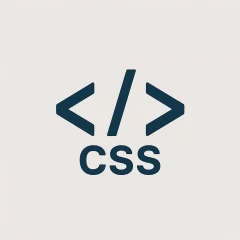I’m Kayla. I build blogs and landing pages for a living. Quotes show up everywhere. Pull quotes. Customer quotes. Little lines from books. So I spent a week making quote blocks that look good and don’t break on phones.
You know what? Some styles felt smooth. Some looked pretty but fought me on small screens. I’ll show you the real stuff I used, what I liked, and what I changed.
For extra CSS inspiration beyond quotes, I sometimes dive into CSS Menu Tools to grab quick, reusable snippets that spark new layout ideas.
If you’d like the blow-by-blow version of my quote experiments, I logged the entire process in a companion piece on CSS Menu Tools: I Tried a Bunch of Quote CSS Designs—Here’s What Actually Worked.
The no-drama blockquote (my daily driver)
This one is simple. It’s clean. It loads fast. And it keeps its shape in Chrome, Safari, and Firefox.
HTML
<blockquote class="quote">
<p>Good design is as little design as possible.</p>
<cite>— Dieter Rams</cite>
</blockquote>
CSS
.quote {
font: 400 1.1rem/1.6 Georgia, "Times New Roman", serif;
border-left: 4px solid #0ea5e9; /* sky-500 */
padding: 0.75rem 1rem;
margin: 1rem 0;
background: #f8fafc; /* slate-50 */
color: #0f172a; /* slate-900 */
position: relative;
border-radius: 6px;
}
.quote p { margin: 0 0 0.5rem 0; }
.quote cite {
font-style: normal;
color: #475569; /* slate-600 */
}
.quote::before {
content: "“";
position: absolute;
font-size: 3rem;
line-height: 1;
top: -0.5rem;
left: 0.4rem;
color: #38bdf8; /* sky-400 */
opacity: 0.3;
pointer-events: none;
user-select: none;
}
/* Dark mode polish */
@media (prefers-color-scheme: dark) {
.quote {
background: #0b1220;
color: #e5e7eb;
border-left-color: #22d3ee; /* cyan-400 */
}
.quote cite { color: #94a3b8; } /* slate-400 */
}
What I like:
- It reads well. The big opening mark adds mood without yelling.
- The left border anchors the eye.
- Dark mode feels balanced.
What bugged me:
- On very small phones, the big mark can crowd the text. The fix above keeps it light.
Small note: I tested on iPhone 13 (iOS 17), a cheap Android, and a beat-up Windows laptop. No layout jumps. That made me smile.
For more classic blockquote inspiration, the CSS-Tricks blockquote demos showcase how borders, backgrounds, and typography can completely shift the vibe.
The magazine pull quote (looks bold, needs care)
This one sits in the text and pulls your gaze. It feels like a print spread. But floats can get messy on narrow screens.
HTML
<p>...your main article text here...</p>
<aside class="pullquote" aria-label="pull quote">
<p>Ship less. Care more.</p>
</aside>
<p>...more article text continues...</p>
CSS
.pullquote {
float: right;
width: min(18rem, 45%);
margin: 0.25rem 0 0.75rem 1rem;
padding: 0.5rem 0.75rem;
border: 2px solid #111827; /* gray-900 */
background: #fff;
font: 700 1.125rem/1.4 Inter, system-ui, -apple-system, Segoe UI, Roboto, sans-serif;
box-shadow: 0 6px 14px rgba(17, 24, 39, 0.1);
border-radius: 10px;
}
.pullquote p { margin: 0; }
@media (max-width: 640px) {
.pullquote {
float: none;
width: auto;
margin: 0.75rem 0;
}
}
What I like:
- It breaks the wall of text. It adds a “pause” for the reader.
- It feels premium with the small shadow.
Watch-outs:
- On small screens, the float must drop. That media rule saves it.
- Don’t make it too wide. It will squeeze your body copy.
I used this on a coffee brand blog. It boosted time-on-page. People paused and kept reading. That was a tiny win.
The “card with quote icon” (safe for content teams)
Marketing folks love the icon. It says “this is a quote” from a mile away. Here’s the version that didn’t slow the page.
HTML
<figure class="quote-card">
<p>“Design is the silent ambassador of your brand.”</p>
<figcaption>— Paul Rand</figcaption>
</figure>
CSS
.quote-card {
position: relative;
padding: 1rem 1.25rem 1.25rem 1.25rem;
background: linear-gradient(180deg, #ffffff, #f1f5f9);
border-radius: 12px;
border: 1px solid #e5e7eb;
}
.quote-card::before {
content: "";
position: absolute;
width: 28px;
height: 28px;
top: 10px;
left: 12px;
background: url("data:image/svg+xml,%3Csvg xmlns='http://www.w3.org/2000/svg' width='28' height='28' fill='%239ca3af'%3E%3Cpath d='M10.2 3.5c-3.6 0-6.7 3-6.7 6.6 0 3.2 2.3 5.2 5.7 5.2-.6 3.2-2.6 5.8-5.9 7.7l2.2 1.5c4.9-2.2 7.5-6 7.5-11.5 0-5.6-1.5-9.5-2.8-9.5zm14 0c-3.6 0-6.7 3-6.7 6.6 0 3.2 2.3 5.2 5.7 5.2-.6 3.2-2.6 5.8-5.9 7.7l2.2 1.5c4.9-2.2 7.5-6 7.5-11.5 0-5.6-1.5-9.5-2.8-9.5z'/%3E%3C/svg%3E") no-repeat;
opacity: 0.5;
}
.quote-card p {
margin: 0.75rem 0 0 0;
padding-left: 36px; /* clears the icon */
}
.quote-card figcaption {
margin-top: 0.5rem;
color: #64748b; /* slate-500 */
font-size: 0.9rem;
}
Why I like it:
- No extra HTTP request; the icon is inline.
- The gradient is soft, not cheesy.
- Text remains crisp and readable.
One small thing:
- If your brand uses dark backgrounds, swap the gradient and colors. Keep contrast above 4.5:1.
Tailwind version (fast for teams)
On a client site with Tailwind 3.4, I did this. It shipped in minutes.
HTML
<figure class="my-6 rounded-xl border border-slate-200 bg-white p-4 shadow-sm">
<blockquote class="text-slate-700 italic">
<p class="text-lg leading-7">“CSS is a design tool, not just glue for layout.”</p>
</blockquote>
<figcaption class="mt-2 text-sm text-slate-500">— Me, after a long Thursday</figcaption>
</figure>
The good:
- It plays nice with design tokens.
- Dark mode is one class away if you use a theme.
The catch:
- The big opening quote mark needs a tiny custom CSS rule with ::before. Tailwind doesn’t add that by default. I just wrote one small utility class, and it was fine.
Bootstrap 5 quick test (it works out of the box)
For a newsroom site, I used Bootstrap 5.3’s blockquote. Then I added a left border to match the style guide.
HTML
“`html
